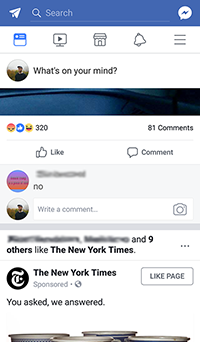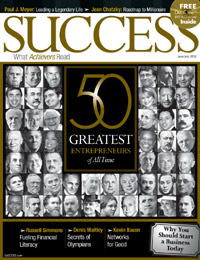It's known by many names and it's all the rage! I'm talking about social media - also known as social media marketing, social media optimisation, SMO,
SMM and social networking. For businesses it has tremendous potential and value, but in simple terms social media is just another communication channel with the world.
But instead of delivering a sales or service message via advertising or marketing, with social media you're talking to people in the way you would with friends, colleagues or strangers who share the same interests.
Social media used to be for the young
Net Generation, as Don Tapscott (Author of
Grown Up Digital) calls them, but now the average age on
Facebook is 35.
LinkedIn has a huge membership between 35 and 54!
As David Mercer, Head of BT Design, told me recently the older generation just can't help hijacking the Net Gens' home turf. Or at least words to that effect. Is it fair? I can see his point but the fact we all use phones doesn't seem to affect the younger generation's perception of ownership of the mobile world.
Even my eight year old is using social media in the form of Club Penguin (Disney's MMOG,
Massively Multi-Player Online Game). By the time he is in business, social media will be just as integrated in his life as email and mobile phones, if they're still around.
With 400 million active accounts on Facebook getting over 120 million unique visitors each month, social media is not going away. But it's important to remember what your objective is if you want to get involved with social media for personal, business or branding reasons.
Different platforms have different personalities: LinkedIn is business oriented while Facebook is social and works better in engaging individuals.
Twitter is real-time news and information on everything from clubs and coffee shops to finance and biochemical research. So each platform should be picked to meet the characteristics of objectives.
Remember, too, that other countries have big platforms. China's platform is QQ and has over 500million users, Orkut has over 100 million users with over 70 per cent of them from Brazil and India. In Russia, Vkontakte has over 60 million, so pick your playground carefully.
Most of the major platforms offer advertising. Facebook, LinkedIn and
YouTube all have a pay per click advertising option which can be targeted at an audience with surgical precision...well, field surgery at least. Let's say I wanted to get people to book me to run workshops in their business.
I could place an advert on LinkedIn targeting Marketing Directors of businesses in the UK with over 250 staff, or perhaps select a few niche industries such as finance, retail and manufacturing. If I get my advert right I will only attract clicks that are likely to convert and, of course, I only pay when they click!
A word of caution: We all put so much information about ourselves on social media that with a little research people can easily find out a lot about you and your business. Reputation management has never been more important.
Using LinkedIn as an example, let's say I want to meet Mr Smith, CMO of a blue chip brand. I look him up on LinkedIn and see that he is a member of a group called Future Trends. I can also see that he is connected to a friend of mine called Thomas. I join the group called Future Trends and ask Thomas to ask Mr Smith if he could tell me more about this group.
Do we think that hearing from Thomas that someone who shares a common interest would like to meet him would be of interest? One would hope so. There are many ways to manage social media but there is a level of lateral thinking that helps.
When setting up a social media strategy there are many monitoring tools that can be used to plan who you should engage with and where you should have a presence. One of my favorites is
Social Radar from Infegy. It gives you a visual representation on how social media accounts are connected, a road map of who's talking to who on the web.
Through this you can see where most conversations are taking place on your topic. These people are called Influencers and they are an important part of a social media strategy as they help organisations and individuals control the conversations.
Let me tell you a story. A well-known journalist was writing about a big brand's new sports car on his blog. The journalist was an Influencer because over 50,000 people subscribed to read his blog on a regular basis. His opinion of the new car's looks was based on a photo he'd seen and unfortunately for the manufacturer the opinion was not a good - the words "back of a bus" and "angry bulldog" come to mind.
Shortly after his opinion hit the net, postings start to appear on blogs and forums echoing his comments. Before long the opinion of even those who have never seen the car is a negative one.
Now if the brand had been monitoring the social biosphere they would have quickly picked up this story and through sentiment monitoring [WHAT'S THIS??] they would have been able to see its negative connotation. They could h,ave seen the topic growing in importance and acted on it. How I hear you say!
Well, my first step would have been to contact the journalist and invite him to experience the car in person. Let's face it, brands are about experience not just looks. Imagine this...
You invite the journalist to join you for a track day. When he arrives he is presented with a shiny new, highly-polished, top of the range version of the car. First impressions...it looks better than it did in the photos.
Then a test driver shows him how smooth and quiet the car is before slamming it into sports mode to demonstrate the near 200mph speed that the car gracefully achieves in the blink of an eye. After spending a day experiencing this luxury car the journalist has a different opinion.
In the next blog he writes about his fantastic day and admits that the pictures he'd seen didn't really do it justice. He then enthuses about his positive EXPERIENCE with the car. Very soon his readers have changed their perceptions, too, and the online conversation has been controlled and made positive.
It is through this careful monitoring and strategic engagement that social media can be used as not only a PR machine but also another market to channel. Let me explain...
Using a Twitter client on my
iPad I am able to see on a map the names of people who are talking around me. This is being picked up by the geo-tagging of where they where when they last posted a message. I used this in a demonstration in a London restaurant which also had a meeting room and private dining area. To our surprise we found that the CEO of King of Shaves was tweeting next door!
It was too much to resist so we responded to his Tweet and invited him over for a drink and a discussion about how the restaurant might be able to help him and his organisation.
We had a fairly fast response saying that he would drop in when he had a chance. You can imagine how long such a meeting would have taken to set up - if at all - using the traditional route to a CEO of receptionists, gate keepers, PAs etc. Social media opens up opportunities never before available.
Staying on the subject of Twitter, real time search allows you to stoke while the iron is hot. If I was monitoring or searching for the words "need+new+monitor" I would find people who have recently Tweeted that they need a new monitor This information could be very valuable to an online electronic shop.
Engaging people when their requirement is in the forefront of their minds and creating a process that is easy to fulfill this requirement can translate into direct revenue. Software like Radian6 can monitor most conversations taking place on the web in near real-time. It is an engagement tool allowing you to watch, listen and respond - as part of a strategy this is a vital component.
Someone once said that if you see the bandwagon you are already too late to jump on it. What should you consider before leaping on to the social media bandwagon?
First, what is your objective? Are you using social media for PR, brand awareness, a channel to market or because you what to listen to the chatter from your industry?
Second, you should define a strategy of what goals you want to achieve and what message needs to be given to achieve success.
Third, who is going to manage the project? To run social media campaigns properly, you'll probably need the services of a manager who has good writing skills and a marketing or PR background. This will have a cost implication so you'll to set KPIs and targets to ensure you achieve a return on the investment.
The good news is that by using YouTube or Facebook to communicate with engaged customers or group members you will discover the cost of contacting your audience is minimal. During his election campaign, Barack Obama was able to communicate with over five million people instantly at no cost on almost a one-to-one to personal level.
Today he has almost 10 million fans on Facebook alone - a few hundred thousand behind Lady Gaga. There aren't many ways of connecting with an audience that size for free, are there? Can your business operate as efficiently as that? As Obama would say: Yes you can!
Article Source:
http://EzineArticles.com/4780081



















































